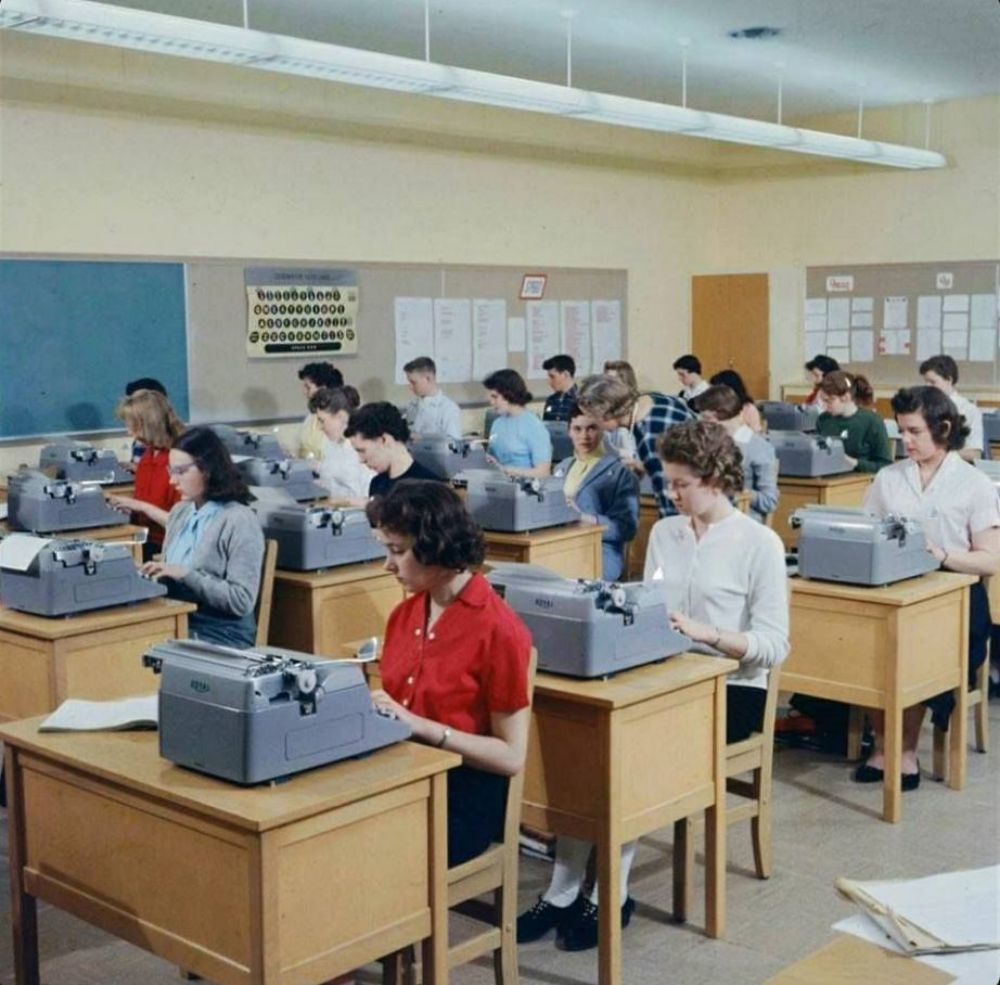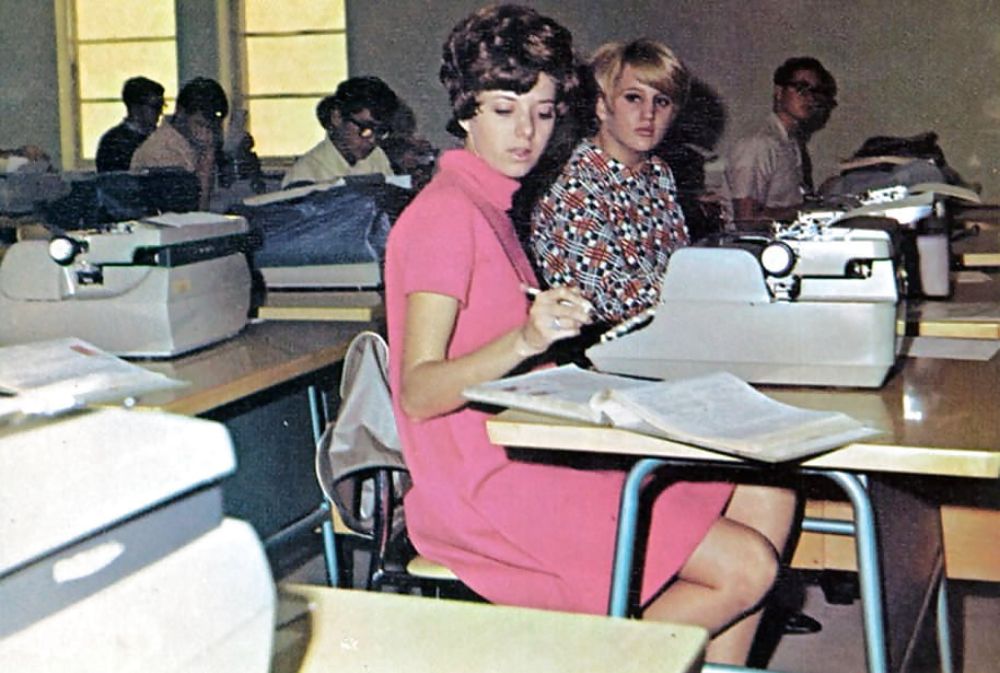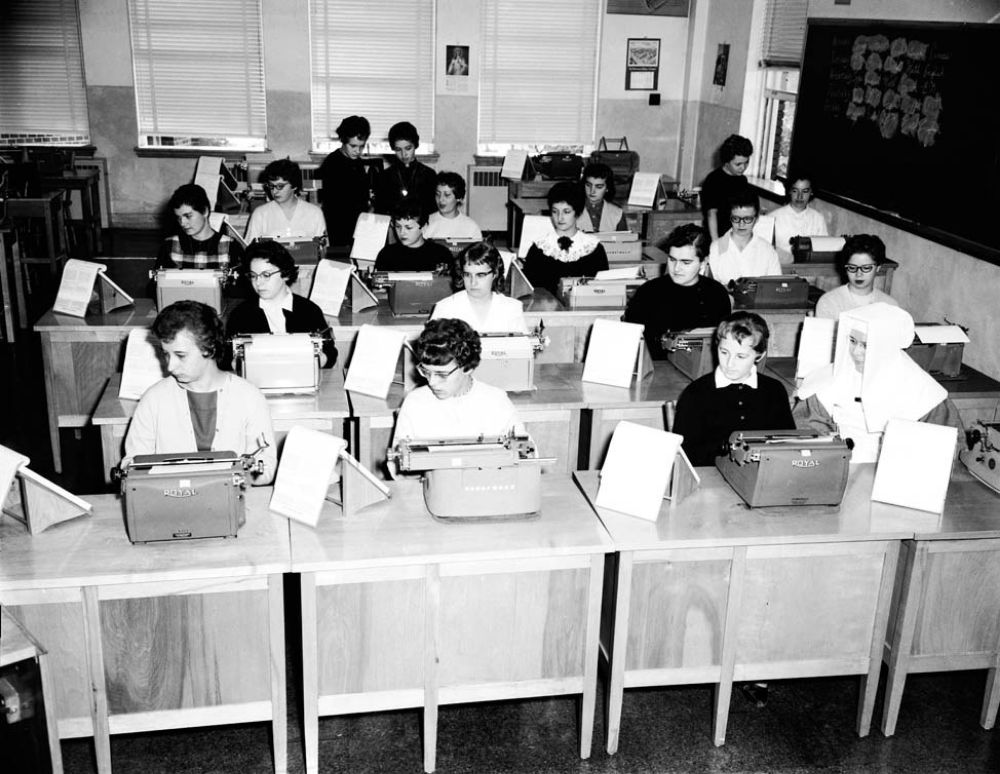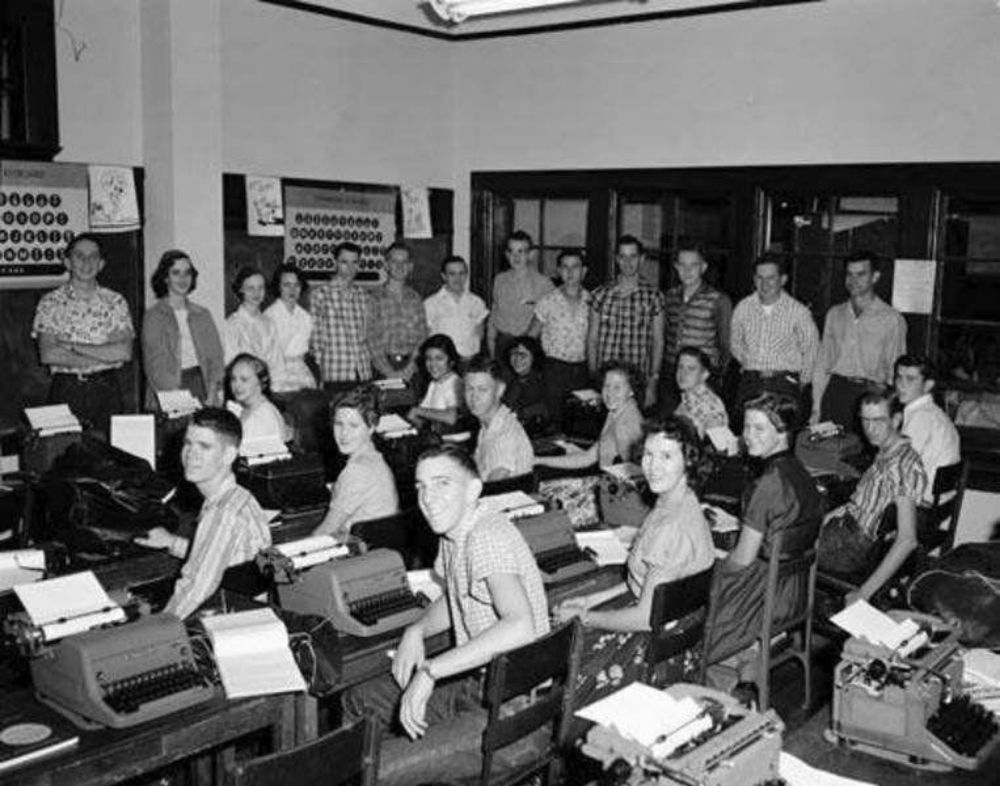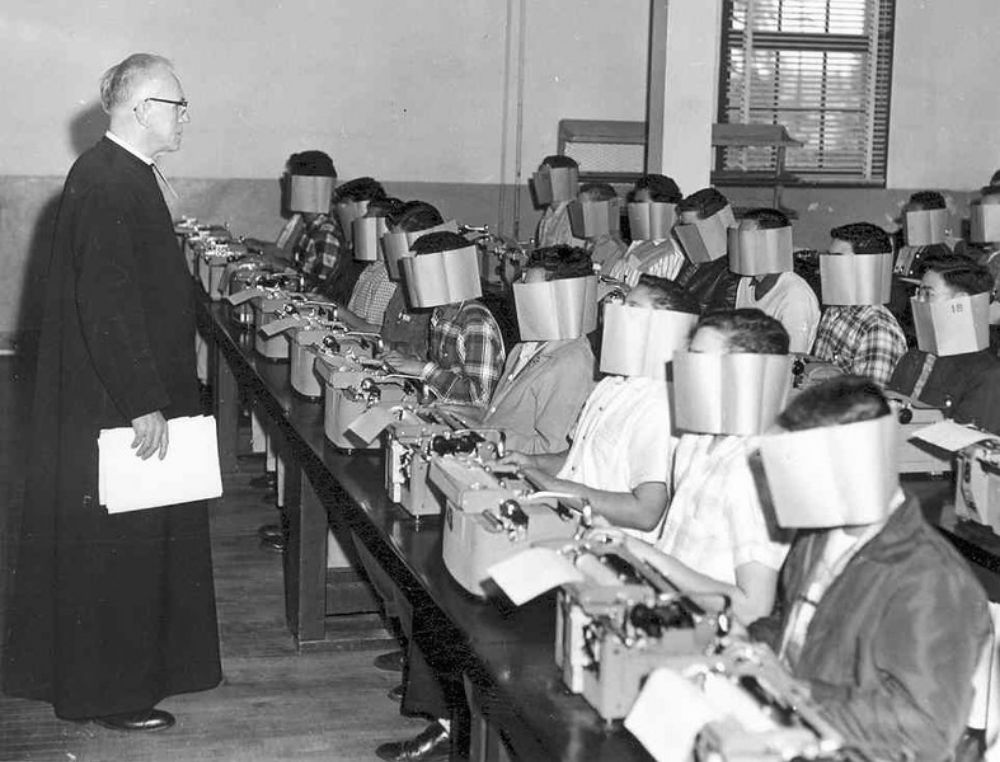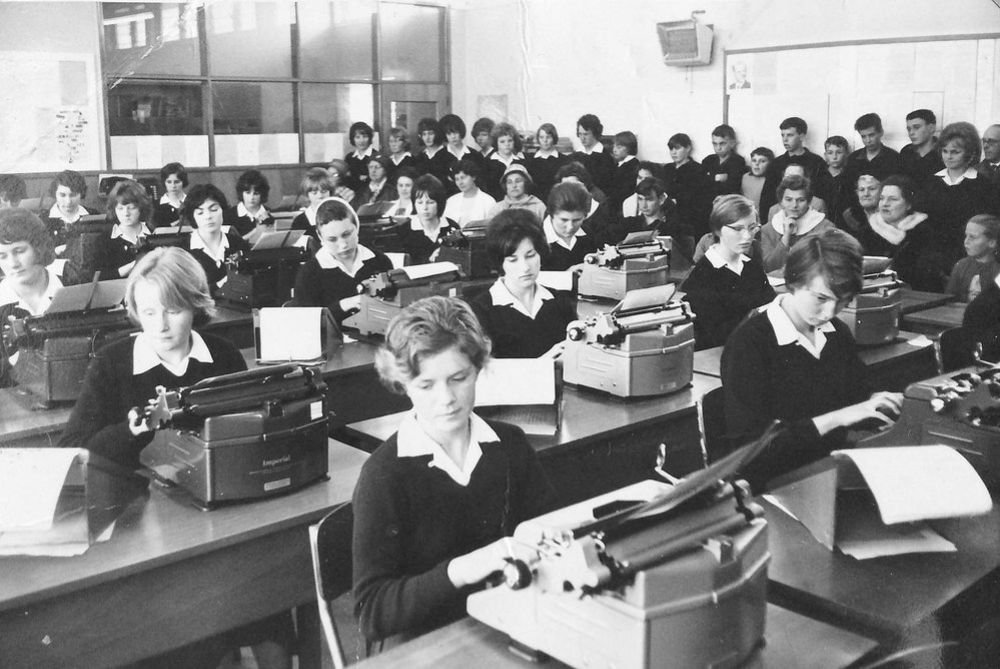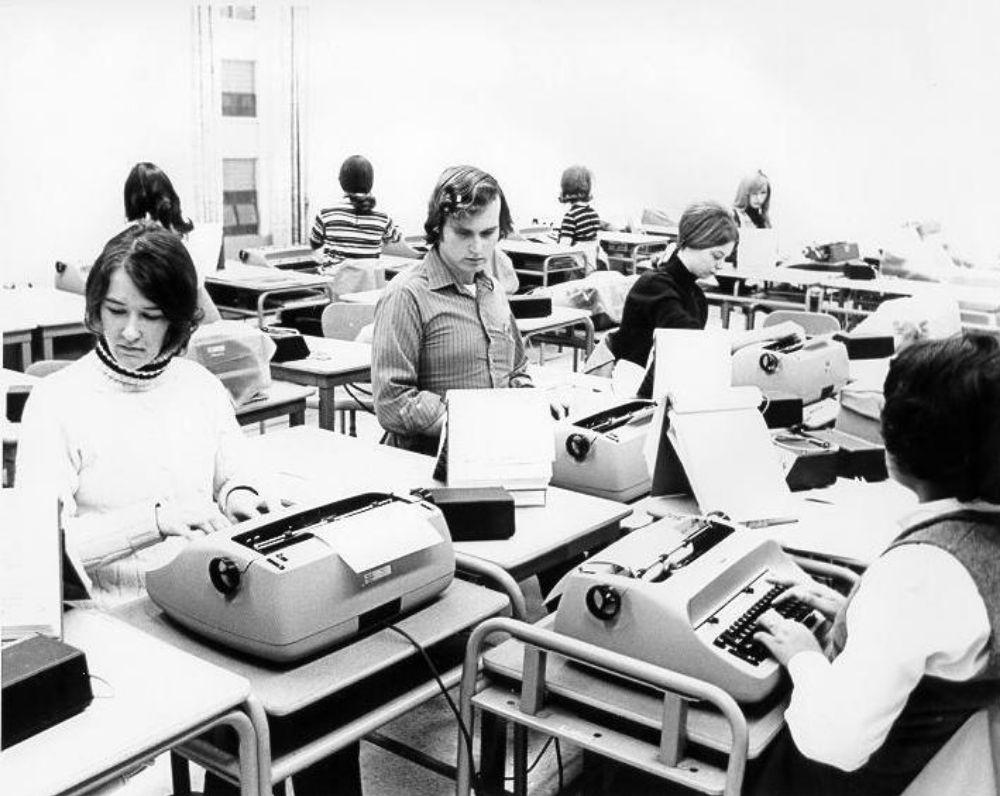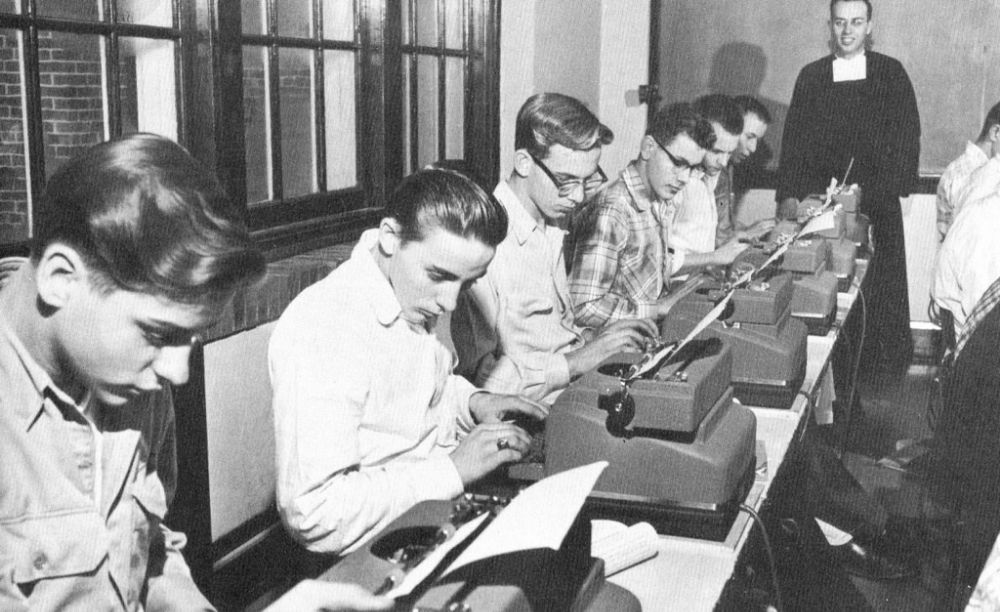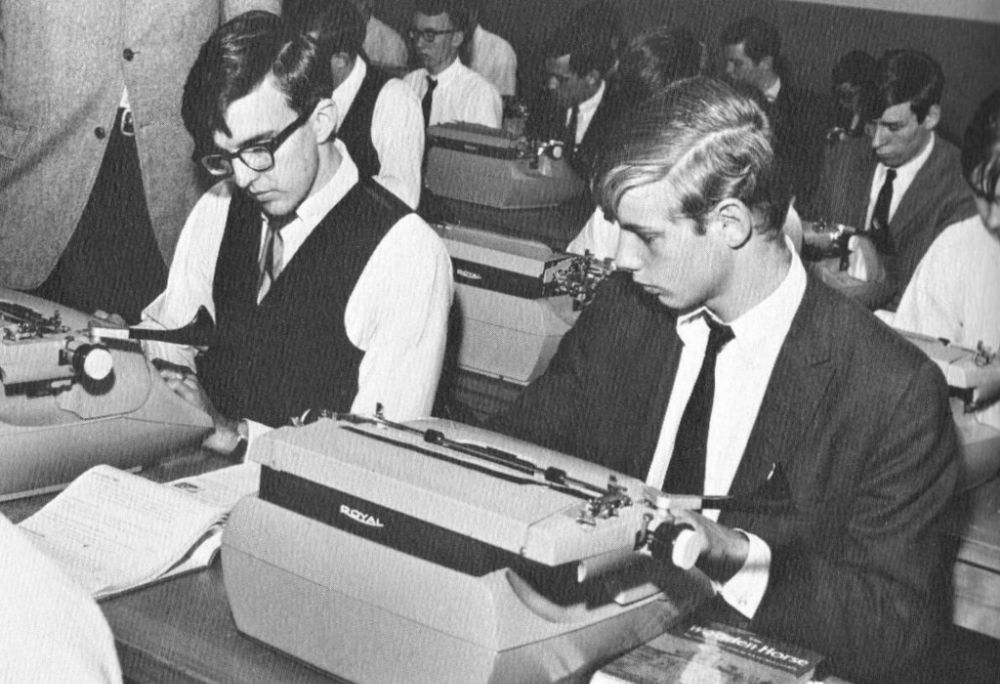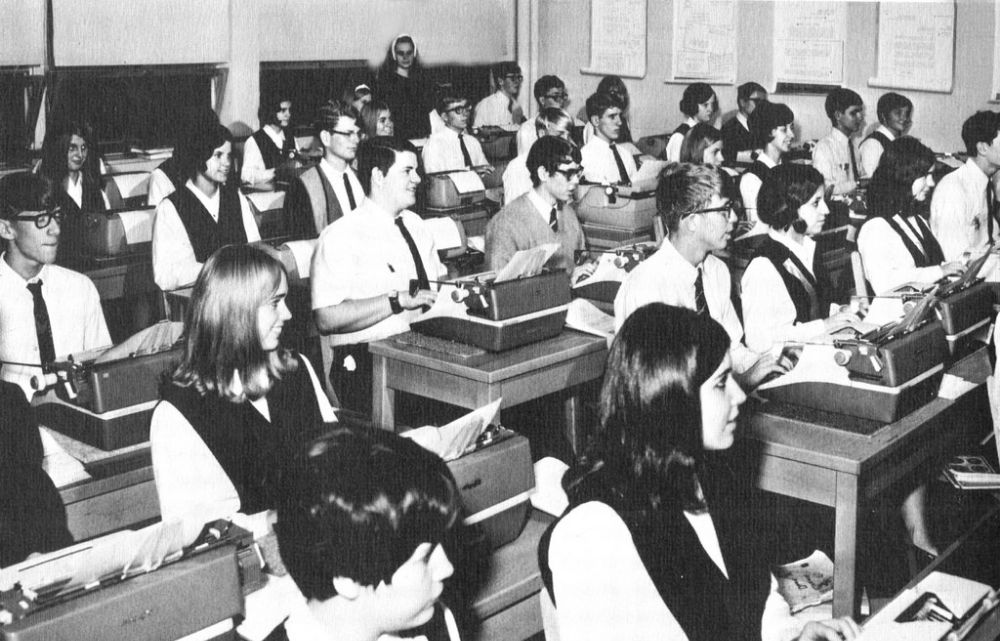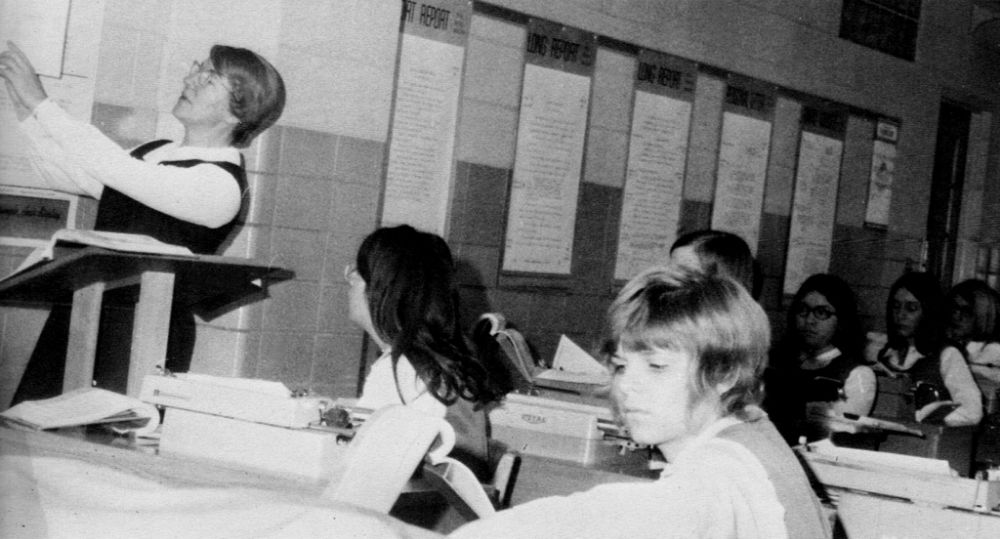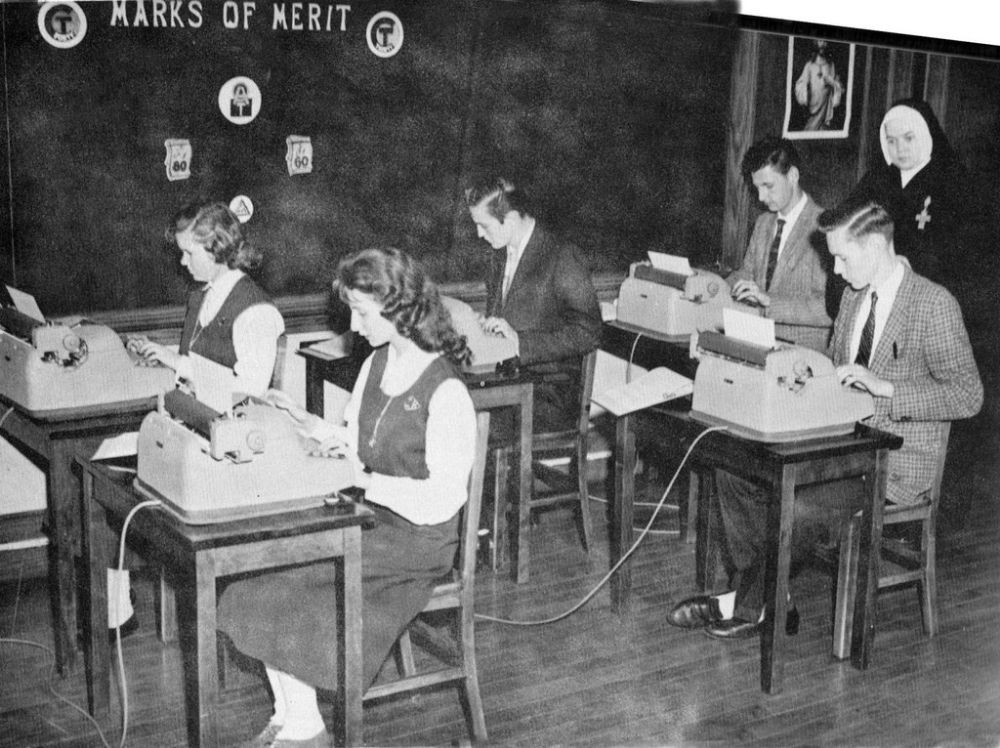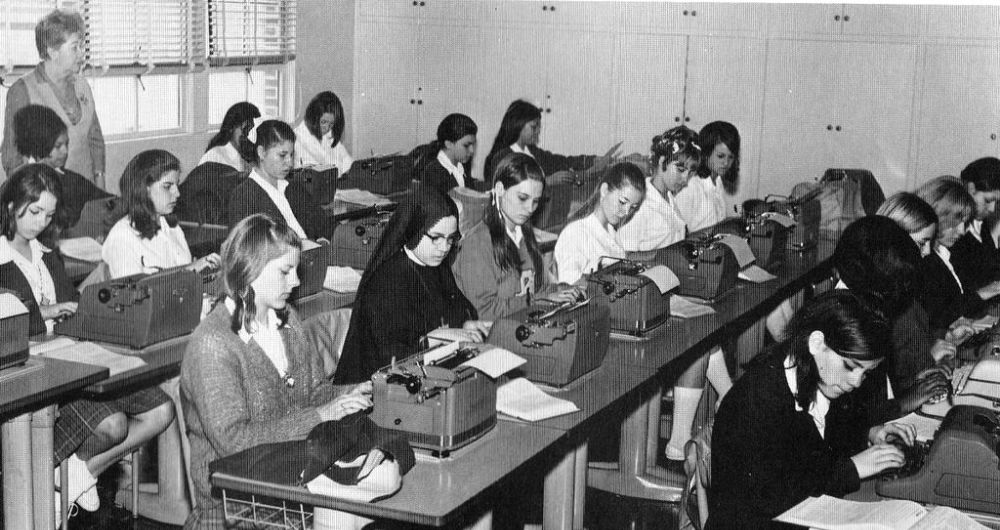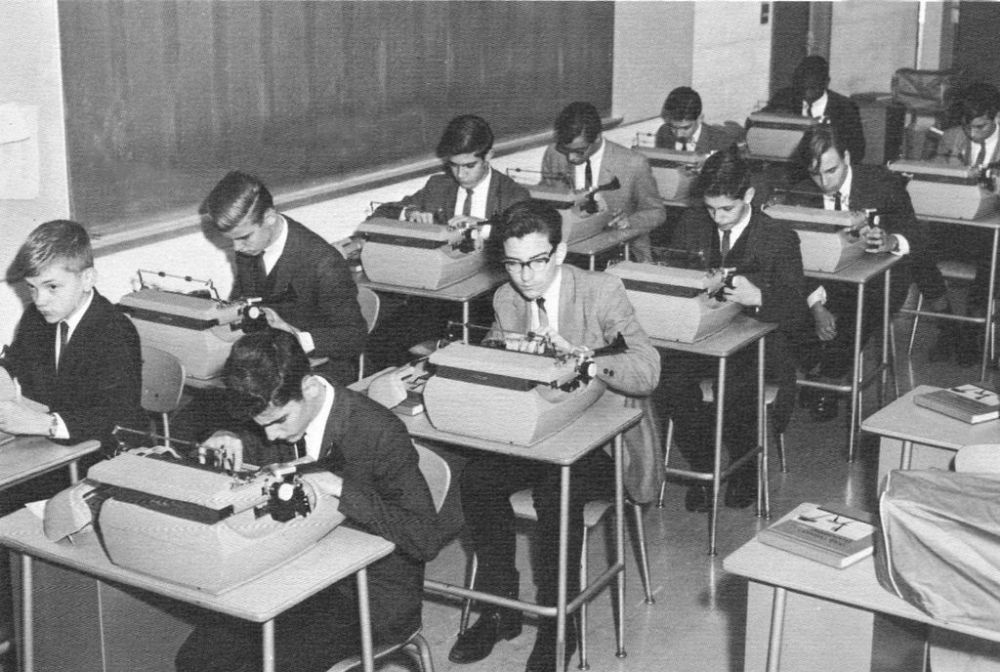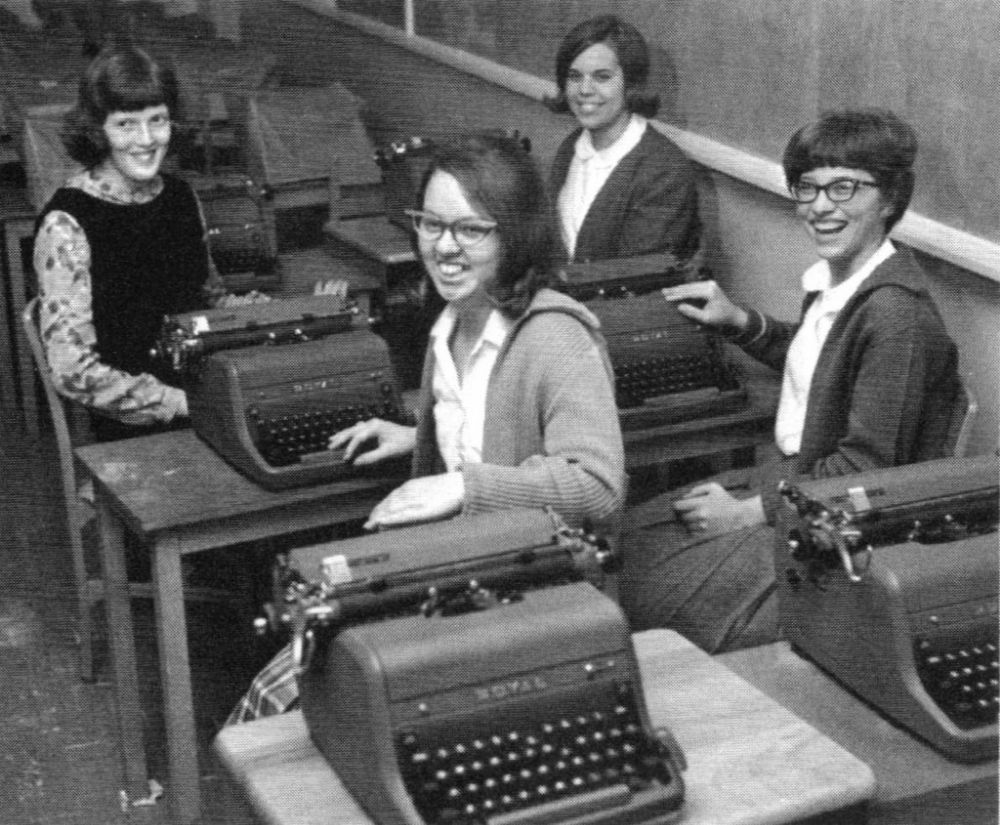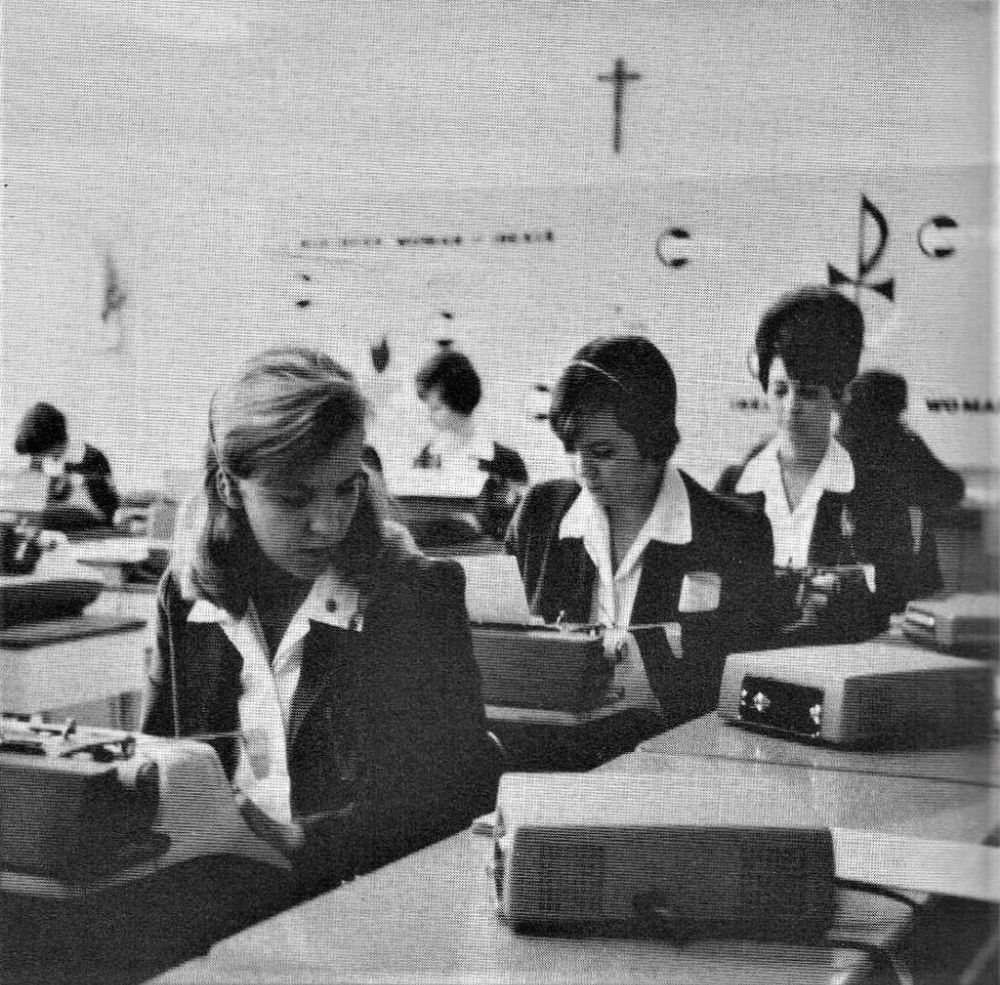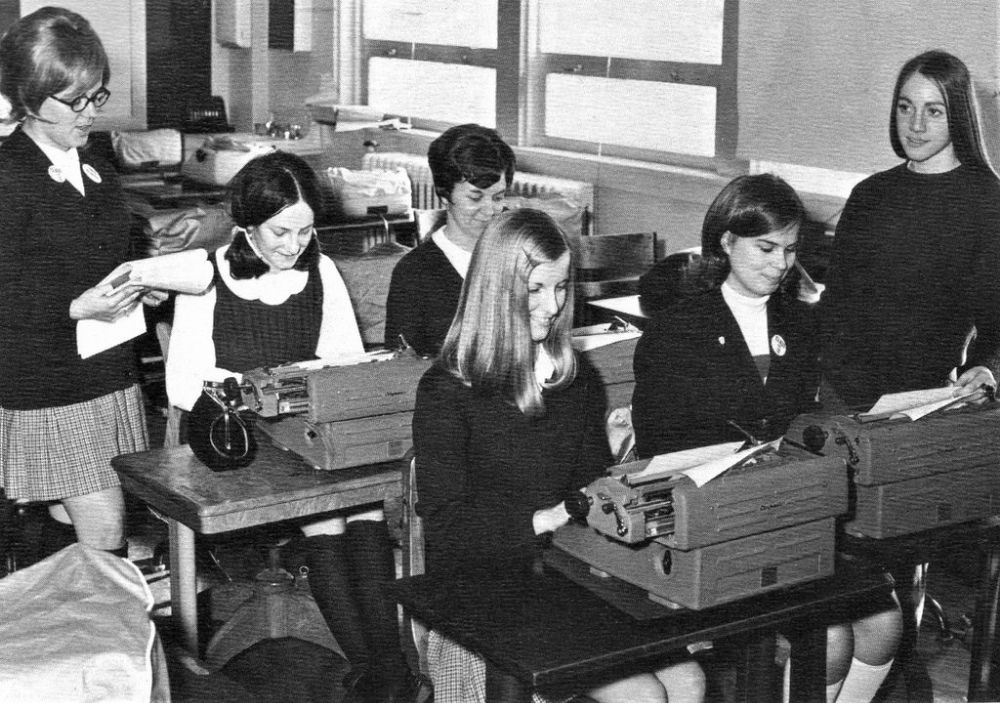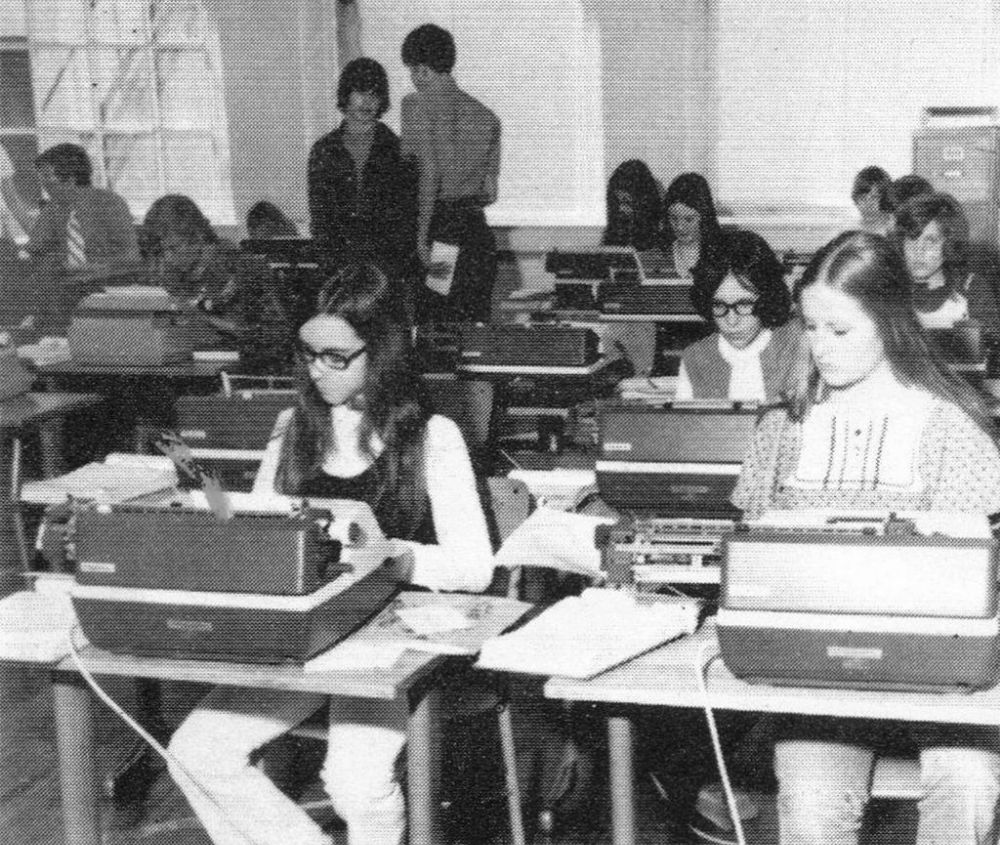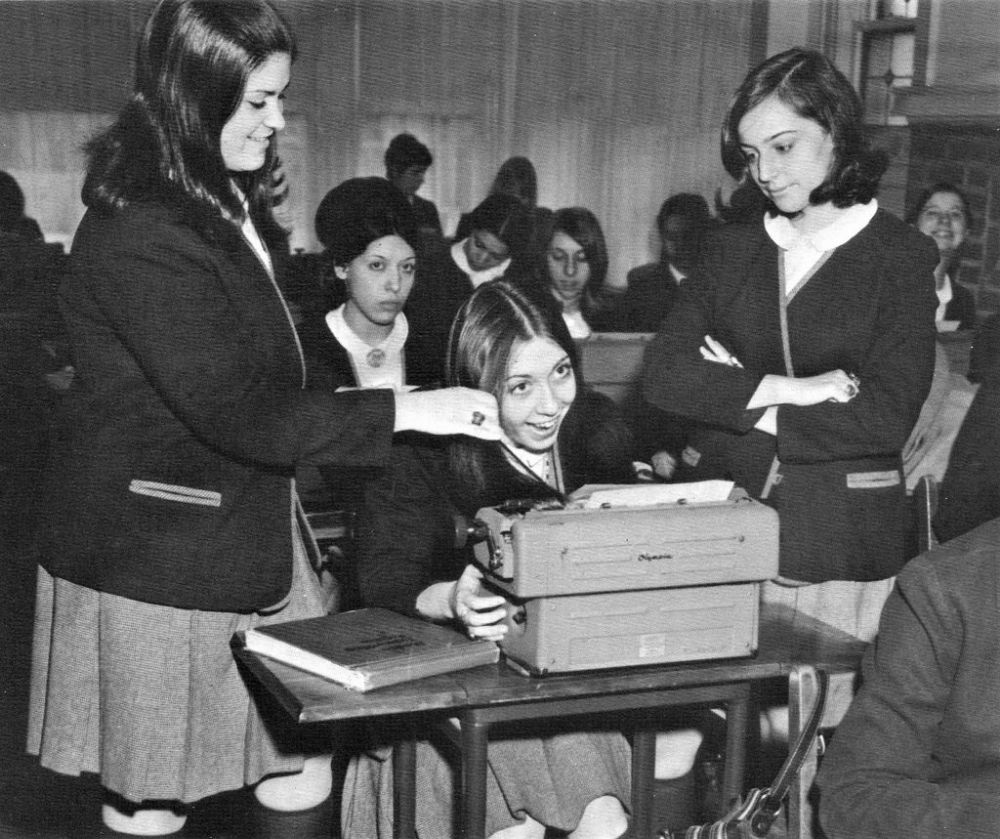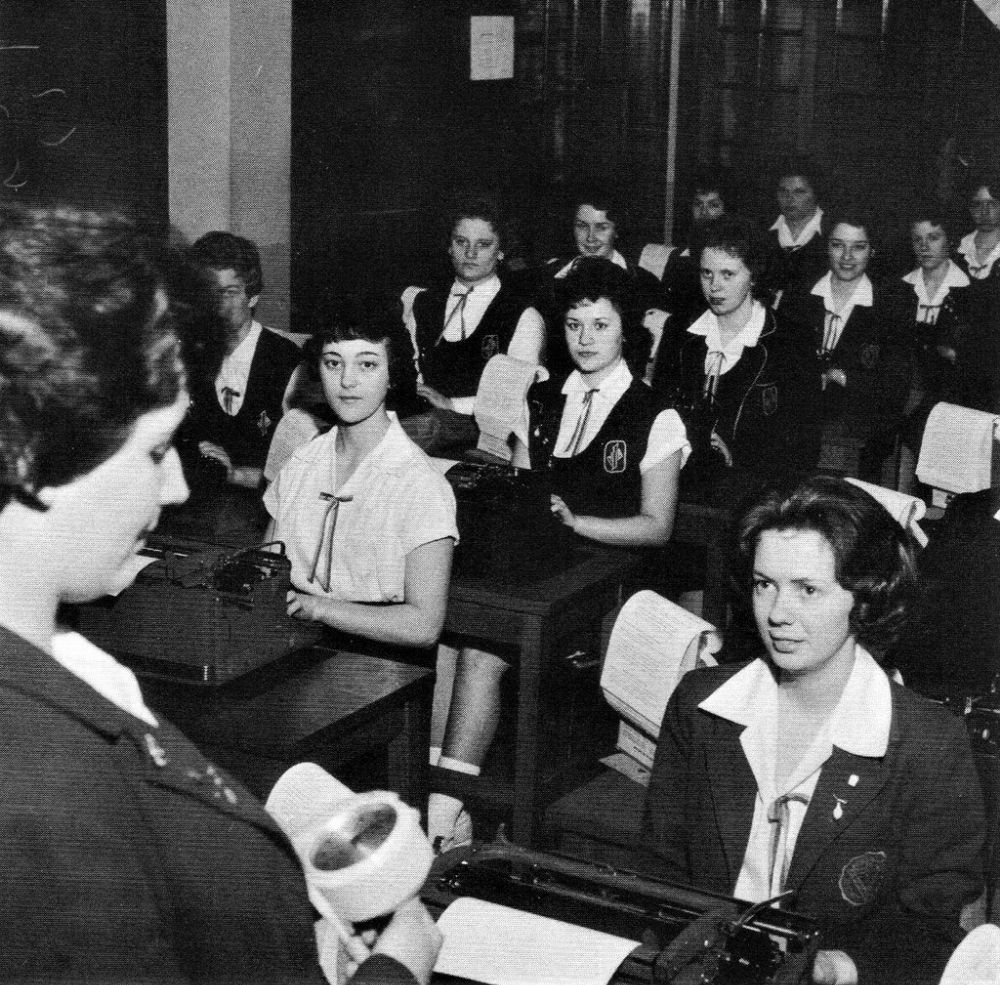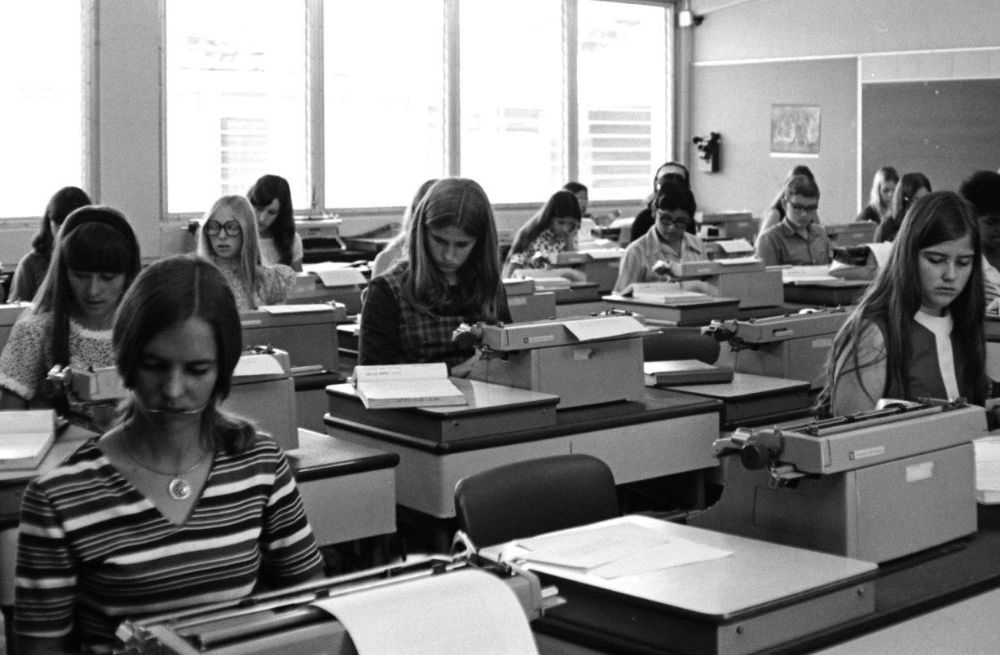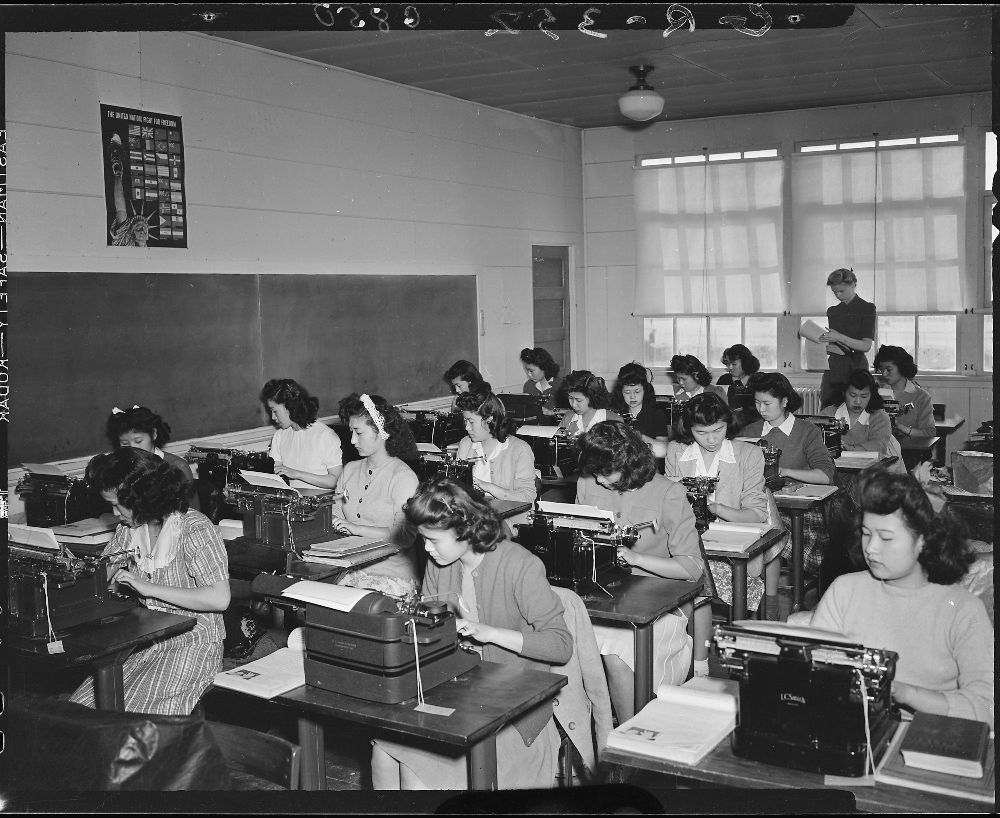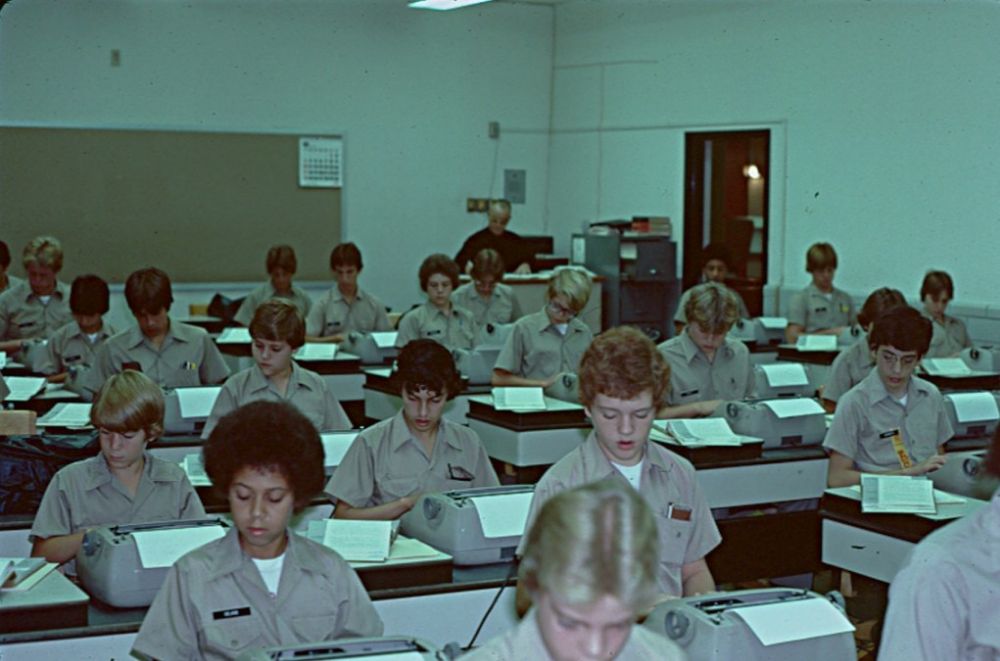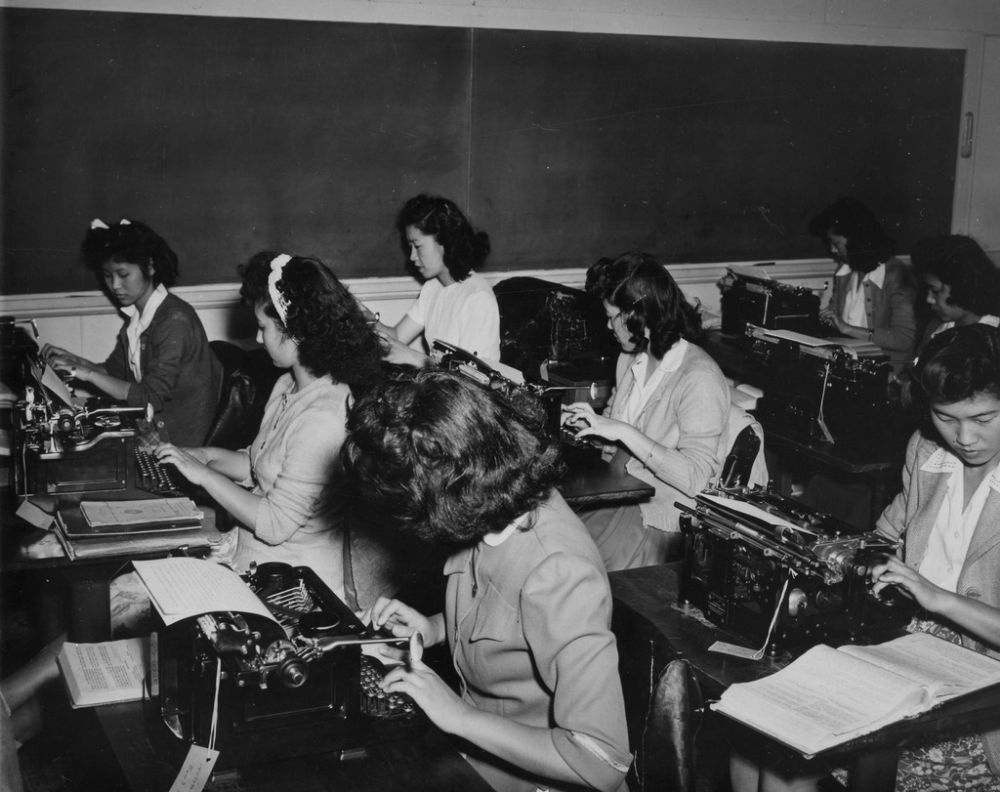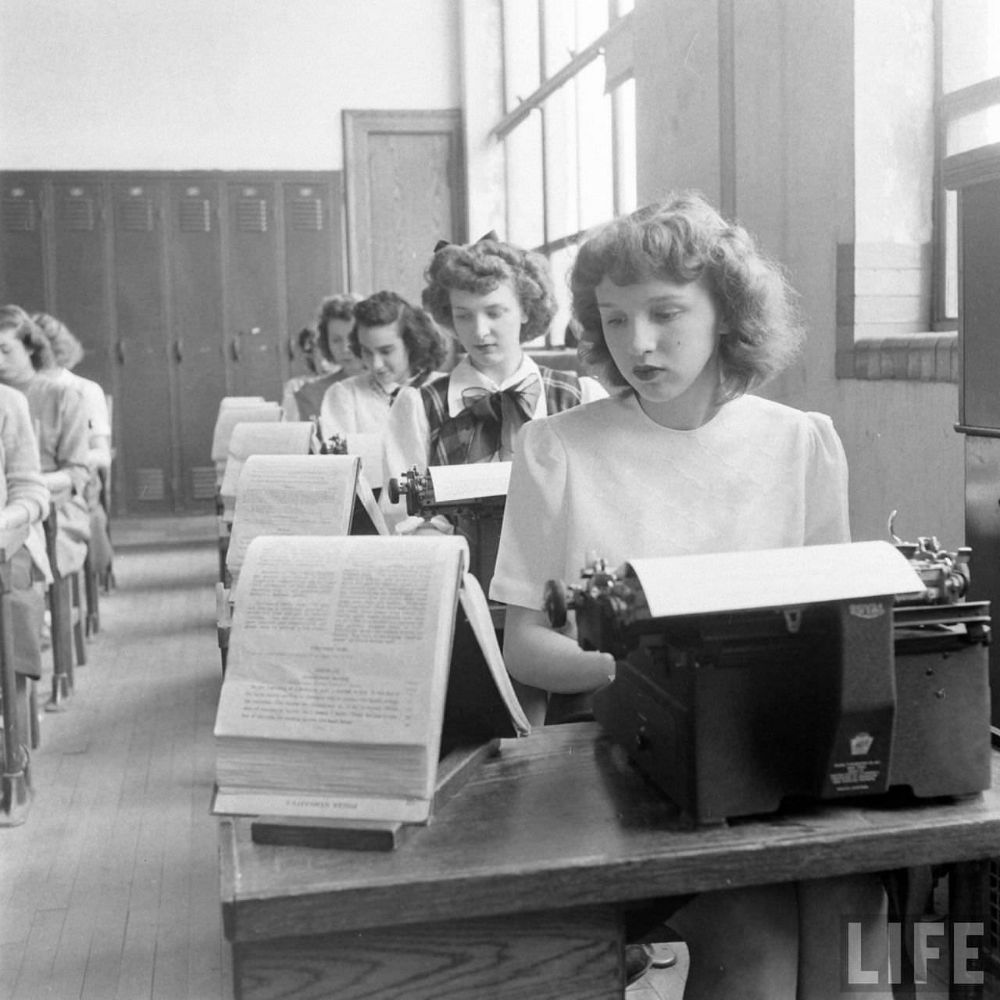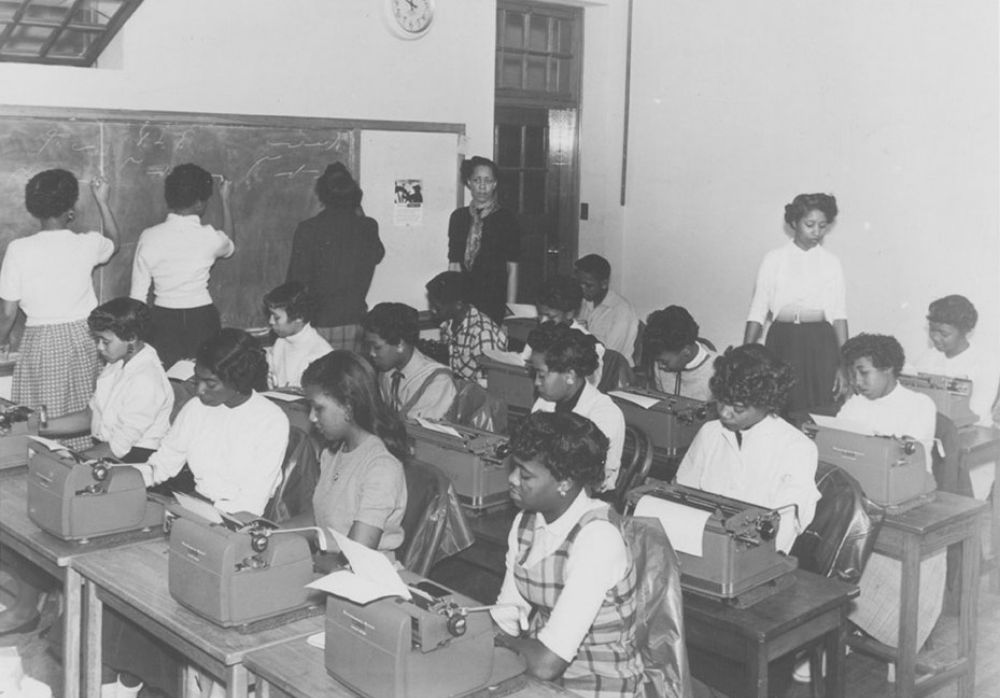The rise of typing classes in US high schools is a captivating chapter in the historical landscape of education, tracing its origins back to an era when manual typewriters and the rhythmic clatter of keys heralded a new age. The introduction of typing instruction can be traced back to the late 19th century when the typewriter emerged as a revolutionary writing tool. Initially seen as a skill relevant only to office work, the practicality and efficiency of typing soon caught the attention of educators. It became increasingly evident that typing proficiency could empower students with a practical skill set indispensable in a rapidly modernizing world. The first-ever typing courses were (as you might expect) provided by typewriter experts, according to Yamada (1983). Roughly around 1880, typing courses were provided by typewriter manufacturers like Remington in an effort to establish the typewriter’s status as an essential technological aid in business. During the early 20th century, typing classes were primarily offered as vocational courses, primarily catering to those aspiring to secure secretarial or clerical positions. These courses often found their place in separate business schools or vocational institutions rather than within mainstream high schools. However, as the demand for typists grew exponentially, educators recognized the universal value of typing skills for all students, irrespective of their career aspirations. By the 1920s, typing classes gradually found their way into US high schools. Initially, the focus was on teaching touch-typing techniques using manual typewriters. The classrooms reverberated with the distinct clatter of typewriter keys as students diligently honed their skills. During the 1950s and 1970s typewriting was taught mostly in elementary schools, and there was a widely held conviction that typewriting skills might fast-forward a student’s acquisition of the English language — especially spelling. Through typing, students tend to become more aware of the forms that letter patterns take, especially the beginning and ending of words. Students were taught the proper hand placement, posture, and finger movements necessary for efficient typing. The classrooms echoed with the rhythmic clatter of typewriter keys as students practiced their skills, aiming to increase their speed and accuracy. Typing classes incorporated both theory and practical exercises. Students learned the layout of the keyboard and became familiar with common typing rules and conventions. They practiced typing drills and exercises to improve their muscle memory and speed. Accuracy was emphasized, and students were encouraged to strive for error-free typing. Typing classes during this era were often segregated by gender, with girls predominantly enrolled in typing courses while boys pursued other vocational or academic subjects. The gender division reflected societal expectations and career opportunities at the time, with typing seen as a skill more aligned with office and secretarial roles. With the advent of personal computers in the 1980s, typing instruction in US high schools experienced a significant transformation. Typewriters gradually made way for computer keyboards, and typing classes expanded to encompass word processing skills and computer literacy. Students were not only taught effective typing techniques but also guided in navigating the digital landscape, facilitating a seamless transition from traditional typewriting to modern technology. Despite the digital age propelling the ubiquity of keyboards and evolving typing practices, the legacy of typing classes in US high schools endures. While the specific teaching methods and technologies have evolved, the fundamental objective remains steadfast: to equip students with a valuable skill set that empowers them to thrive in an ever-changing professional landscape.
(Photo credit: Pinterest / Wikimedia Commons / Flickr). Notify me of new posts by email.
Δ Subscribe
